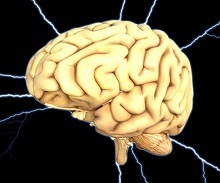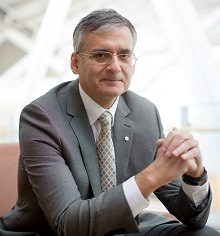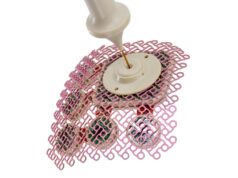 While focused ultrasound is by no means a brand-new innovation in the field of neurotherapy—having first been deployed in the 1950s, if not earlier, for therapeutic, non-invasive purposes—the emergence of magnetic resonance imaging (MRI) guidance and other novel technologies have increased its applications markedly since the turn of the century, and the potential, unrealised uses it has in interventional neurology today are perhaps even greater still. This theme, and the possibility of a “revolution in neurotherapy”, were explored at the 7th Congress of the European Academy of Neurology (EAN; 19–22 June 2021, virtual) in a session where transcranial, ultrasound-based surgery for tremors, blood brain barrier opening, and focal neuromodulation with ultrasound, all featured.
While focused ultrasound is by no means a brand-new innovation in the field of neurotherapy—having first been deployed in the 1950s, if not earlier, for therapeutic, non-invasive purposes—the emergence of magnetic resonance imaging (MRI) guidance and other novel technologies have increased its applications markedly since the turn of the century, and the potential, unrealised uses it has in interventional neurology today are perhaps even greater still. This theme, and the possibility of a “revolution in neurotherapy”, were explored at the 7th Congress of the European Academy of Neurology (EAN; 19–22 June 2021, virtual) in a session where transcranial, ultrasound-based surgery for tremors, blood brain barrier opening, and focal neuromodulation with ultrasound, all featured.
Andres M Lozano, chairman of neurosurgery at Toronto Western Hospital (Toronto, Canada), began the session by outlining the use of focused ultrasound in neurosurgery, as it can be used to penetrate the skull non-invasively and create therapeutic lesions—a technique that can be further optimised with MRI guidance. Lozano reported examples of this approach’s deployment to treat tremors via a thalamotomy, with sound energy being administered to an awake patient for about 13 seconds at a time.
“We usually start making small lesions at low temperatures, and we gradually increase the temperature by subsequent sonications until the tremor disappears—and the effects, of course, are immediate,” he added. Lozano stated that, following evidence on the effectiveness of this technique from a randomised clinical trial published in the New England Journal of Medicine (NEJM) in 2016, MRI-guided focused ultrasound (MRgFUS) has joined a group including three other major treatment options that Toronto Western Hospital offers outpatients with Parkinson’s disease and other movement disorders who have failed medication—the first line of therapy. These surgeries are radiofrequency (RF) lesioning, deep brain stimulation (DBS) and radiosurgery with a gamma knife.
Lozano reported that about 90% of patients at the centre are currently opting for MRgFUS when given the choice between these four treatments. “Focused ultrasound has overtaken DBS, which ranks as number two in patients with tremor, and so this has really revolutionised our treatment of tremor because patients are now coming in and asking for focused ultrasound—and many patients do not want an invasive therapy like RF or DBS,” he added. Lozano claimed there is a “general trend” towards minimally invasive, low-maintenance therapies like MRgFUS right now, and that patients and physicians alike who have previously shunned surgery will accept focused ultrasound as a viable option, in his experience.

In addition to expanding the use of focused ultrasound to bilateral staged thalamotomies for essential tremor, which has been performed in a handful of patients to date, as well as other movement disorders like dystonia, Lozano emphasised the possibility of targeting other areas of the brain with focused ultrasound beyond the ventral intermediate (VIM) nucleus—including the globus pallidus internus (GPi), subthalamic nucleus (STN), and pallidothalamic tract (PTT).
In concluding his presentation, Lozano alluded to numerous other, broader areas within neurotherapy that focused ultrasound could be used for, ranging from brain tumour ablation to psychiatric indications like depression, anxiety and pain—many of which are currently being investigated through Phase I or preclinical trials. He also highlighted the treatment of epilepsy and hydrocephalus, and the idea of dissolving blood clots, as especially “exciting” therapeutic possibilities, but tempered this by stating there is still “work to be done” to investigate these concepts further.
Opening the blood brain barrier
The session’s second talk saw Jean-François Aubry, research director at the French National Centre for Scientific Research (Physics for Medicine Paris, Paris, France), discuss efforts to transiently, and safely, open the blood brain barrier using ultrasound—something that he claimed is a clinical need, as roughly 95% of therapeutic drugs currently are unable to penetrate this barrier and enter the brain.
As is also the case with the neurosurgical applications Lozano discussed previously, the history of focal blood brain barrier opening with ultrasound dates back as far as the mid-20th century, according to Aubry, although these early efforts induced damage to the barrier, and their effect was irreversible. He stated, however, that a “game-changer” was uncovered in the early-2000s, with the use of contrast agents being the principle on which safely opening the blood brain barrier is based today.
And, while the majority of examples of this being done have involved animal subjects, certain applications have been completed in humans. Aubry alluded to a 2019 report of a clinical safety and feasibility study, published in Scientific Reports, that demonstrated the use of blood brain barrier opening, followed by administration of chemotherapy to treat brain tumours, in five patients. In addition, he referenced a 2018 study in Nature Communications that achieved its primary outcome of safely opening the barrier in five early-to-moderate Alzheimer’s disease patients. According to Aubry, the initial findings of both of these studies are now being expanded and investigated further.

“So, this is very important work in paving the way for many treatments—but, actually, it is also very interesting in the development of new devices that may be smaller and easier to use on patients,” he added. A team from Columbia University in the USA has developed its own novel, neuronavigation-guided, single-element focused ultrasound transducer, Aubry told the EAN audience, and—as recently as December 2020—used it to treat its first patient via blood brain barrier opening within the context of a clinical trial.
Aubry went on to highlight a handful of alternative methods for ultrasound-based blood brain barrier opening, including his own team’s work to develop a cheaper, yet still high-quality and precise, focused ultrasound technique using a 3D-printed acoustic lens that costs “a couple of euros” and a single-element transducer. Finally, he referenced the potential held by another technique, developed by French start-up company CarThera, which involves implanting a transducer device at the surface of the brain before using a generator-powered transdermal needle to apply ultrasound. This approach has been assessed in a safety and feasibility study involving 21 patients with recurrent glioblastoma, according to Aubry, the findings of which were published in Clinical Cancer Research last year.
Neurostimulation with ultrasound
Before concluding, Aubry briefly touched on ultrasonic neurostimulation—adding that, while many of the principles this technique is based on are similar to those seen in ultrasound-based blood brain barrier opening, a key distinction is that the former does not require a contrast agent. He added that more than 250 articles on ultrasound stimulation have been published since 2000—with the number of new articles in this space increasing significantly each year since 2015, leading Aubry to assert that “the field is growing exponentially”.
These closing remarks provided an appropriate introduction to the session’s final presentation—which saw Roland Beisteiner, associate professor in the Department of Neurology at the Medical University of Vienna (Vienna, Austria), take a closer look at ultrasound-based focal neuromodulation for clinical therapy. While he asserted that, over the past few years, several different technologies have come to the fore in this space, he chose to focus on the latest of these breakthroughs: transcranial pulse stimulation (TPS).
Beisteiner outlined the various advantages TPS has over previous focused ultrasound techniques, including the fact its pulse generation is based on an already widely and clinically established technology, its “very short pulses” enabling the avoidance of secondary stimulation maxima, and the risks associated with brain heating also not being present during the process. He went on to specify particular benefits of TPS compared to approaches like transcranial magnetic stimulation (TMS) and transcranial direct current stimulation (tDCS)—most notably an “unprecedented precision” in targeting brain tissue with pathological conductivities, which may open up new possibilities in treating movement disorders, stroke, and multiple sclerosis (MS), and the fact TPS can be seen to offer a clinical option akin to non-invasive DBS.
Beisteiner described the latter as a “really fantastic” novel option, relaying that numerous psychiatric and neurological diseases, from addiction, depression, and obsessive compulsive disorder (OCD) to Alzheimer’s, epilepsy, and pain, could benefit from a non-invasive form of DBS such as this. On Alzheimer’s disease specifically, he referred to data from a 2019 study published in Advanced Science, which showed “significant long-term improvement of memory” at three months following TPS, before alluding to a separate study from 2021 that built on this research by showing TPS can reduce cortical atrophy in Alzheimer’s patients.













